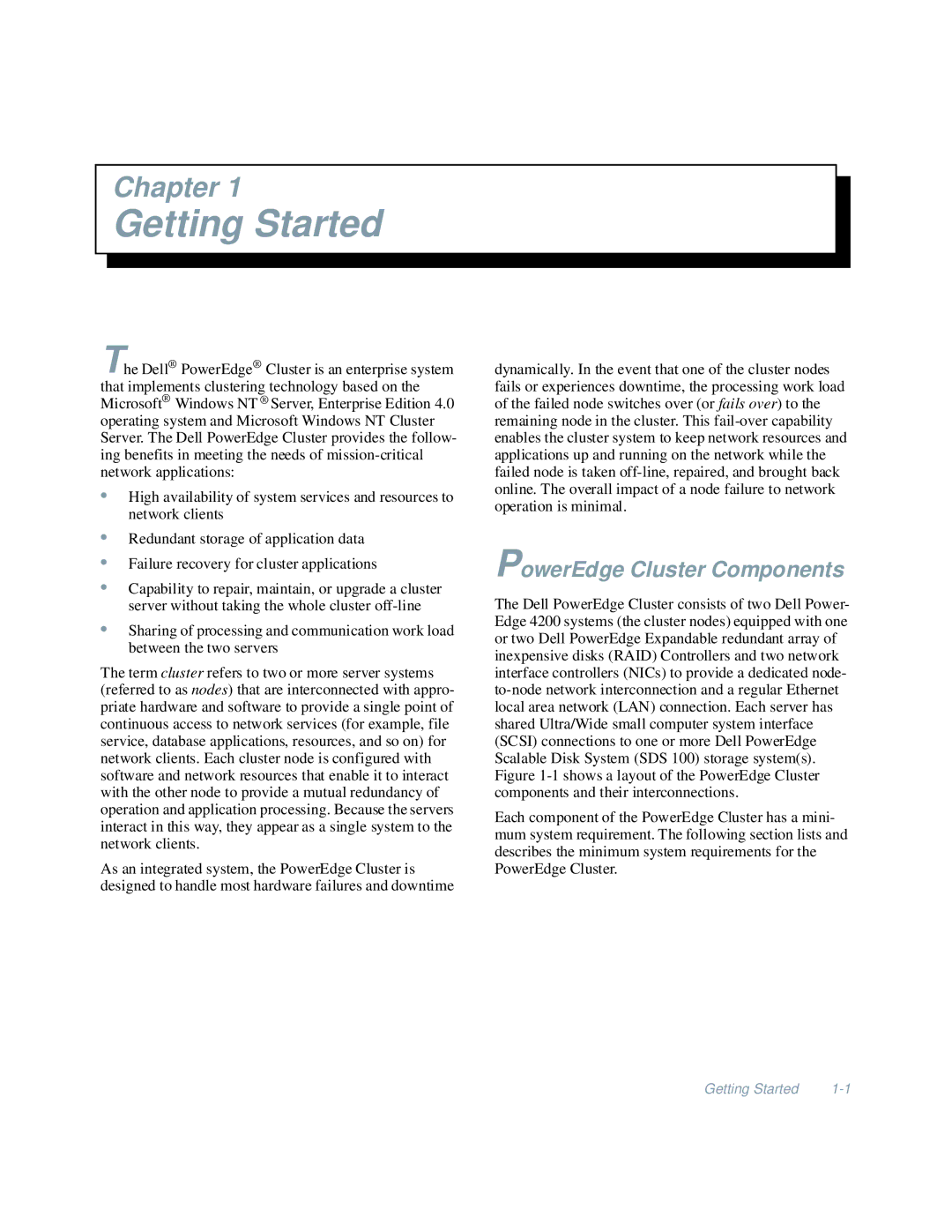
Chapter 1
Getting Started
The Dell® PowerEdge® Cluster is an enterprise system that implements clustering technology based on the Microsoft® Windows NT ® Server, Enterprise Edition 4.0 operating system and Microsoft Windows NT Cluster Server. The Dell PowerEdge Cluster provides the follow- ing benefits in meeting the needs of
•High availability of system services and resources to network clients
•Redundant storage of application data
•Failure recovery for cluster applications
•Capability to repair, maintain, or upgrade a cluster server without taking the whole cluster
•Sharing of processing and communication work load between the two servers
The term cluster refers to two or more server systems (referred to as nodes) that are interconnected with appro- priate hardware and software to provide a single point of continuous access to network services (for example, file service, database applications, resources, and so on) for network clients. Each cluster node is configured with software and network resources that enable it to interact with the other node to provide a mutual redundancy of operation and application processing. Because the servers interact in this way, they appear as a single system to the network clients.
As an integrated system, the PowerEdge Cluster is designed to handle most hardware failures and downtime
dynamically. In the event that one of the cluster nodes fails or experiences downtime, the processing work load of the failed node switches over (or fails over) to the remaining node in the cluster. This
PowerEdge Cluster Components
The Dell PowerEdge Cluster consists of two Dell Power- Edge 4200 systems (the cluster nodes) equipped with one or two Dell PowerEdge Expandable redundant array of inexpensive disks (RAID) Controllers and two network interface controllers (NICs) to provide a dedicated node-
Each component of the PowerEdge Cluster has a mini- mum system requirement. The following section lists and describes the minimum system requirements for the PowerEdge Cluster.
Getting Started |
